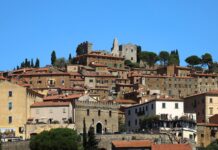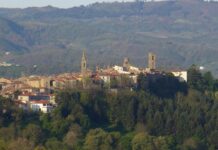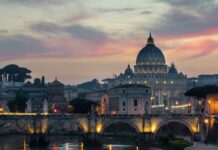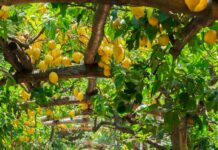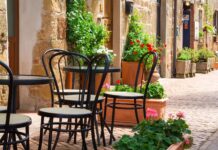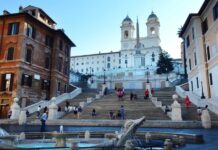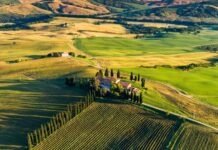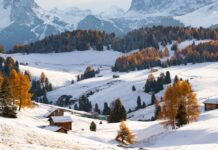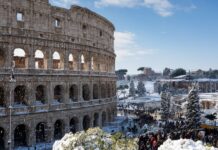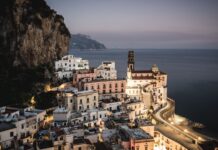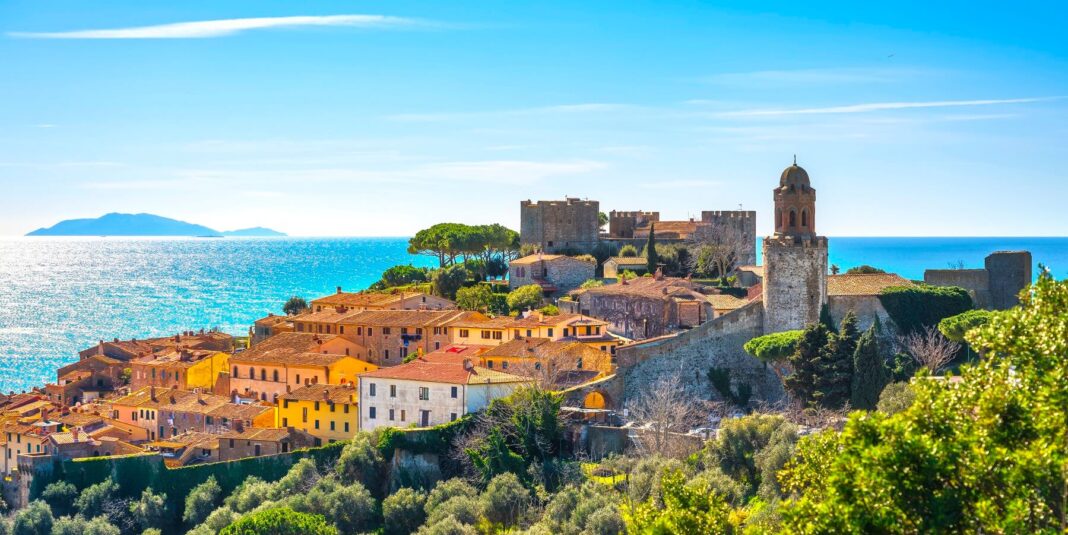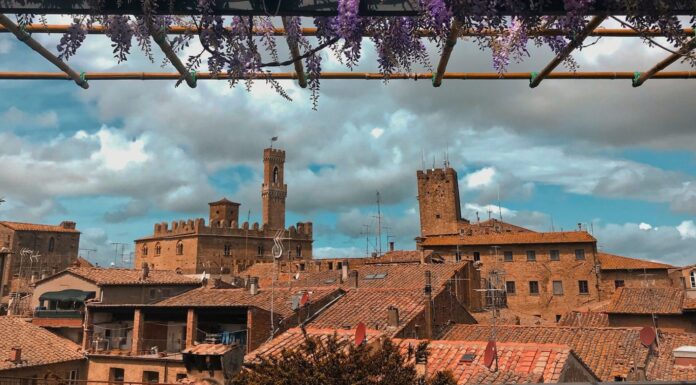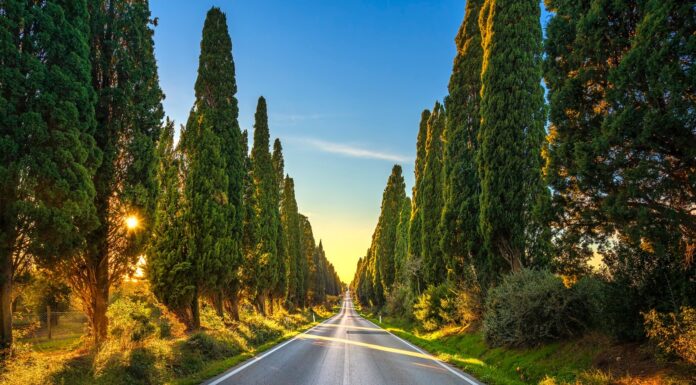Castiglione della Pescaia is located about 20 kilometers from Grosseto along the Tyrrhenian coast in Southern Tuscany. It boasts medieval history, bustling seaside beaches, a charming port, and ample opportunities for rare bird watching and hiking.
The coast of Southern Tuscany is not to be missed, and Castiglione della Pescaia is just the spot. From rare bird sightings to windsurfing, to seaside markets, to an ancient Etruscan neighborhood, everyone will find something to do in this resort town. The combination of rich history, seaside escapes, and beautiful nature will sweep you away into perfect vacation mode!
The geographical region where Castiglione della Pescaia is found, Maremma, runs along the coast of the Tyrrhenian Sea. This environment is rich in wildlife, birds, and gorgeous beaches, lending well to human settlement through history and, in the modern era, to seaside resort towns like Castiglione della Pescaia.
How to Get to Castiglione della Pescaia
Castiglione della Pescaia is somewhat accessible by train from major airport cities like Florence or Rome by arriving at the Follonica or Grosseto stations and taking a bus or taxi to Castiglione della Pescaia (20-30 minutes). Due to the lack of train connections in the city itself, renting a car is advisable. A car is also a great benefit for the abundance of nearby attractions, towns, and nature reserves that are difficult to reach using public transportation.
7 Things to Do in Castiglione della Pescaia
This destination offers a delightful escape for travelers seeking a perfect blend of relaxation and cultural exploration. Here are seven must-try activities to make the most of your visit to Castiglione della Pescaia:
1. The Centro Storico Historical Center
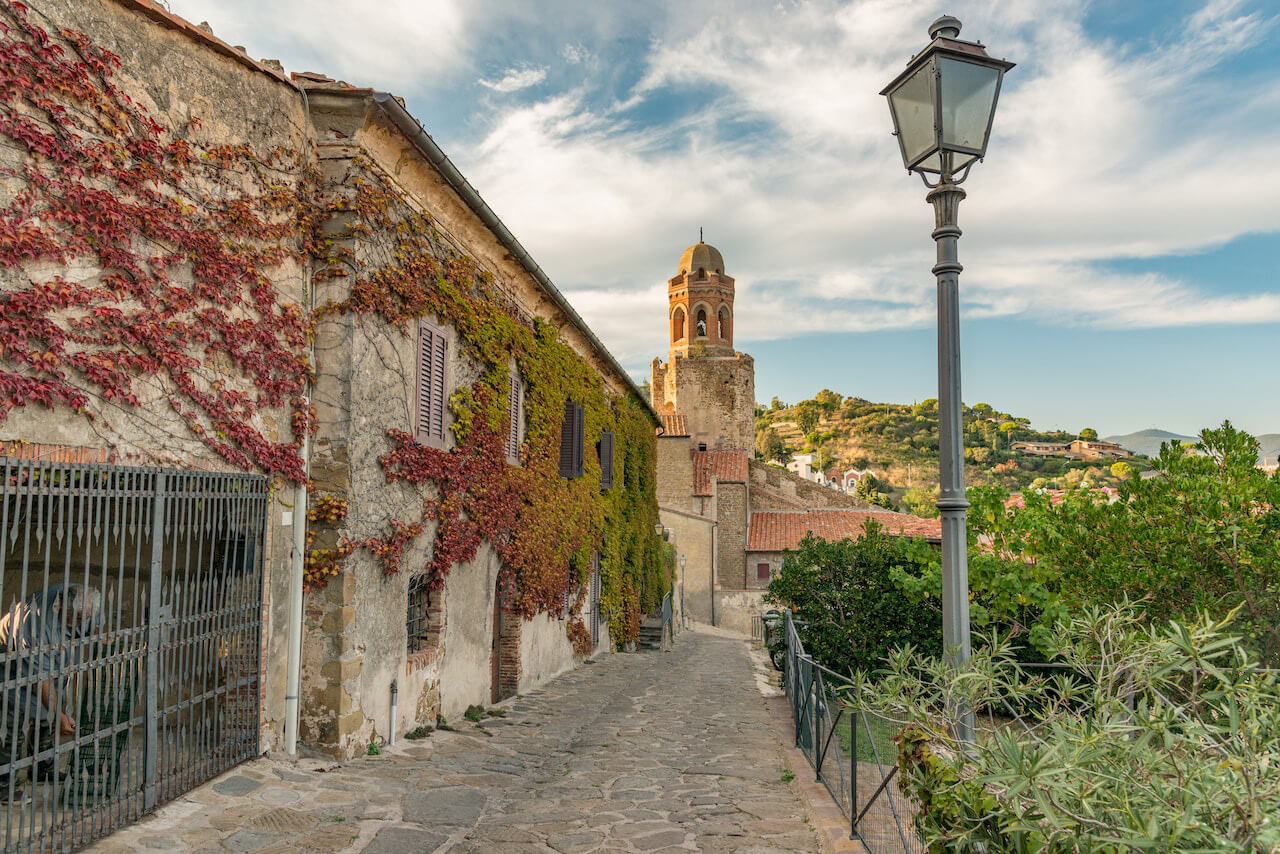
Castiglione della Pescaia’s centro storico is full of architectural monuments. The entrance begins the historic precedent: you enter the historic village from the city gate or Porta Urbica, which was built in its current version in 1608.
- The 18th century Church of the Madonna del Giglio will catch your eye just inside. Its location near the gate gives insight to the fact that it was once used as a military building used to house garrisons to defend the town’s entrance.
- Walking Via del Recinto will bring you up to the town walls and the famed panoramic road where you will find the castle and a sweeping view of your surroundings: the wild Uccellina Mountains, the Diaccia Botrona marshes, and the Tuscan plains.
- The Church of San Giovanni Battista offers a quintessential bell tower, built around an older circular military tower. Inside you can find the relics of the patron saint of the town: San Guglielmo d’Aquitania.
2. The Castle Over The Port and Its Panoramic View
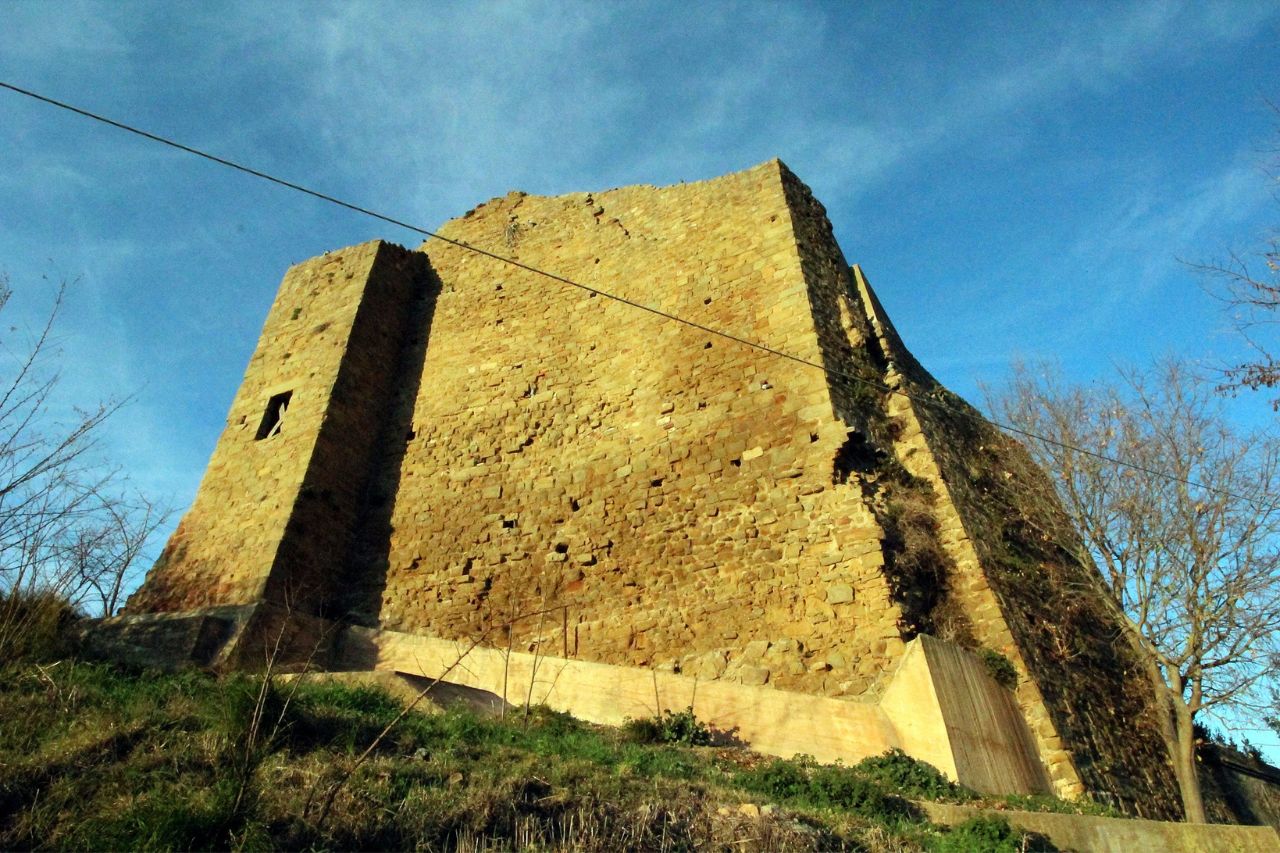
The Castle of Castiglione della Pescaia is now privately owned, but it’s possible to admire this enchanting 10th-century building from the walkway in front of it. It consists of three towers arranged in a triangular shape. The original structure is much older, built in the 8th century, and served as a military fortress under the control of the Church of Rome.
The city wall, around what’s now the centro storico, was built around it as further reinforcement. It was King of Naples Alfonso of Aragon who, in 1447, gave the fortress its signature “castle” icons: the towers. In the years following, many important rulers and families had power over the castle: the Medici, the Lorraine, and the Piccolomini of Siena. Later, with the unification of Italy, it became property of the state.
In the late 1800s it was renovated and taken up as a private resonance, which it remains today. Don’t worry, though: the majesty of the castle is still an impressive sight from the panoramic street before it!
Explore more: 15 Castles in Tuscany – An Enchanting World of Timeless Beauty
3. The Seafront and the Harbor
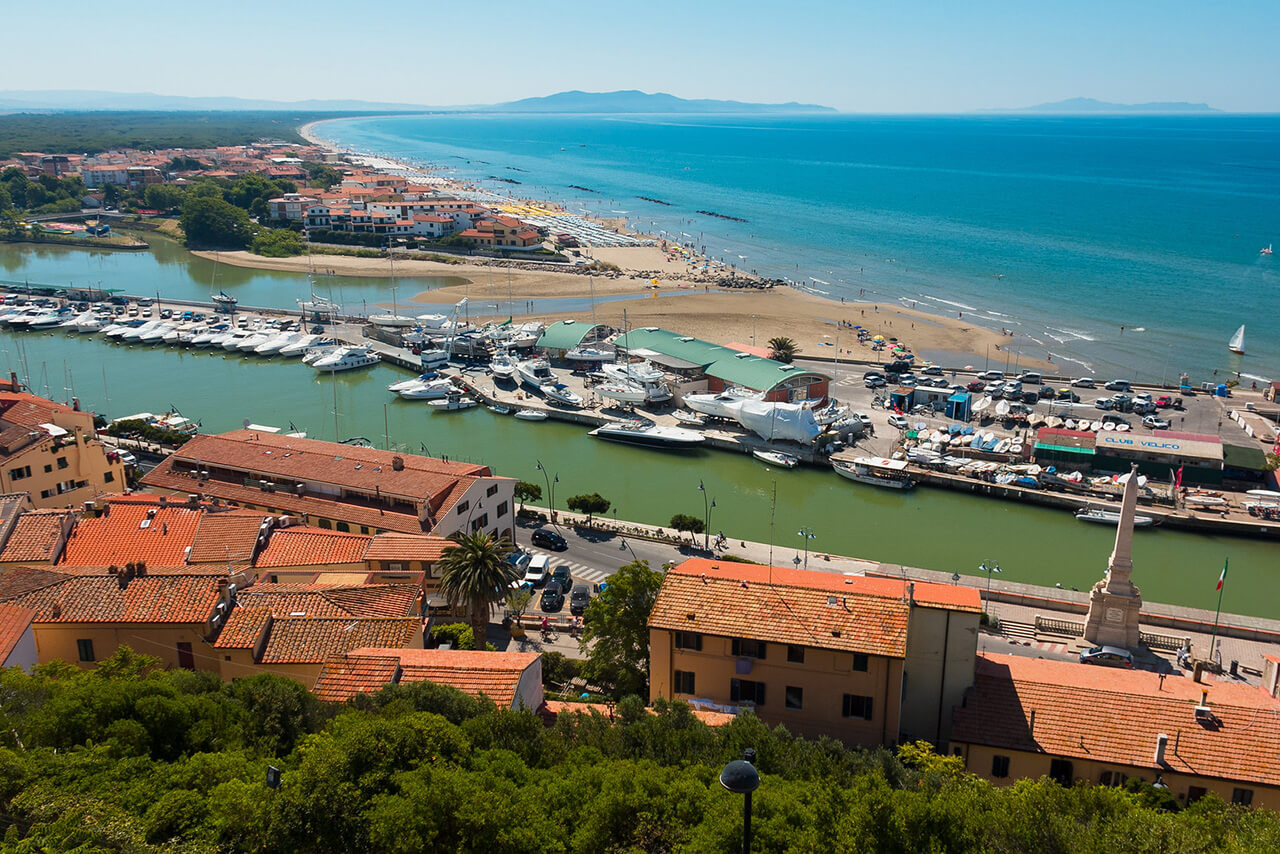
The seafront and lungomare of Castiglione della Pescaia offer a quintessential seaside atmosphere, with benches along the seafront to sit and enjoy the view. The harbor itself is made by a natural channel dug by the Bruna River before it reaches the sea and houses everything from fishing boats to luxury yachts. On Saturday morning you can find the local market. Daily, you can meet the fisherman coming back with their catch, where you can find hake, red mullet, sandy bottom fish, and all the varieties of blue fish common to the area. In the evening your dinner awaits, as the seafront transforms into lines of restaurants and fine dining venues.
4. Diaccia Botrona Natural Reserve
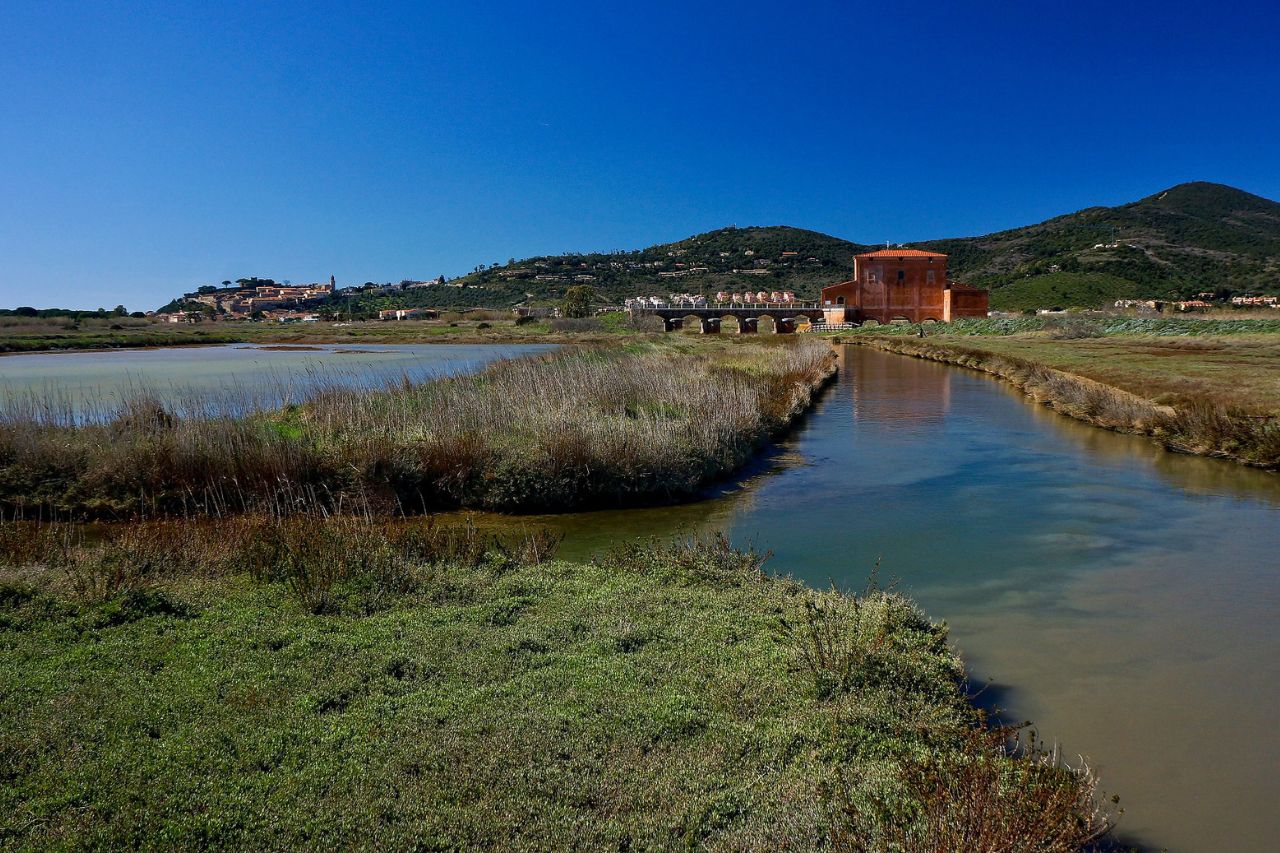
The Diaccia Botrona Natural Reserve is a protected marshland east of Castiglione della Pescaia, occupying the plainlands between there and Grosseto. It is nestled between the Bruna river and pine forests. As is appropriate for an area boasting so much ancient and medieval history, the marsh of Diaccia Botrona Natural Reserve was created by an ancient lake called Lake Prile.
It is legally designated as an important area for the migratory rest and nesting of aquatic birds such as ducks, herons, and march harriers, and hosts more birds than any other wetland in Tuscany. Its inhabitants include many rare species! Be prepared to sport flamingos, wild geese, cranes, egrets, ospreys, and more. The reserve offers a 14-kilometer loop and can be visited on foot, by bike, or by small boat. Entrance to the marshes is free, and the visitors center provides all information about routes and guided tours by boat. The best time to visit is in winter or at the start of migrations, around September or March (some birds only stay a few days on their way further south!). In summer the reduced water level will bring wading species of birds… but you will also find more heat, mosquitos, and dry vegetation.
Casa Ximenes (Ximenes House)

At the western end of Diaccia Botrona Natural Reserve, you will find Casa Ximenes. Built over the marsh in 1765, the building was used to control the flow of water between the marsh and the Tyrrhenian Sea, to reduce stagnation and keep the water level healthy for activities like keeping livestock, fishing, and transport.
Today Casa Ximenes houses an interactive museum about the nature reserve. It is open on Thursdays, Fridays, Saturdays, and Sundays from 1 pm until 7 pm from September to May. From June to August, it’s open Tuesdays, Wednesdays, Thursdays, Fridays, Saturdays, and Sundays from 4 pm – 10 pm.
5. Birdwatching and Wildlife photography
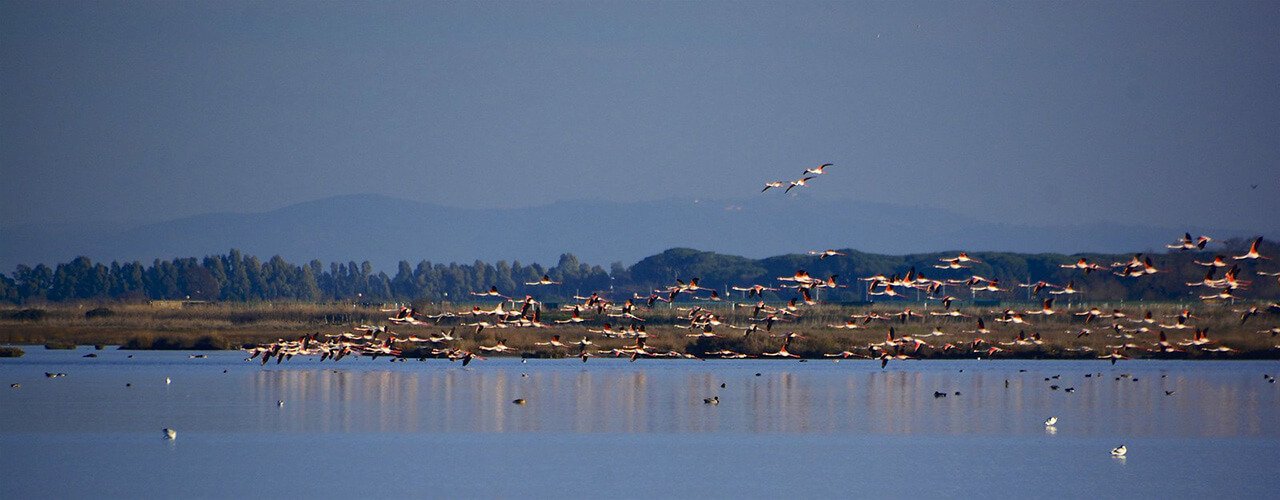
The Diaccia Botrona Natural Reserve offers an abundance of birdwatching and wildlife photography opportunities! Birdwatching boat trips are offered at Diaccia Botrona, and depart from Casa Ximenes. The entire surrounding geographical area of Maremma offers many lagoons, dunes, pine forests, and marshes.
Another nearby option (35 minutes by car) is Riserva Naturale Padule Orti, a WWF site. The park is open from January to May and from July to December to protect the birds nesting in June. Special reservations can be made for photographs to visit at opportune times by contacting the park at +39 338 4141698 or 389 9578763.
Oasi del Padule di Scarlino (15 minutes north of Castiglione della Pescaia by car) offers free entrance. You can access the park from the parking lots next to the Museo Acheologico di Portus Scabris.
On the map at Centro Ornitologico Toscano you can search by bird species, and it will point you in the direction of where and when to find them.
The coastal pine forests Pineta del Tombolo extend 15 kilometers inland from the coastline of Castiglione della Pescaia. Reptiles like Herman’s tortoise and birds like the crested cuckoo can be spotted within, but the forest’s ecosystem suffers from the impact of mass tourism in the summer months.
6. The Etruscan town of Vetulonia
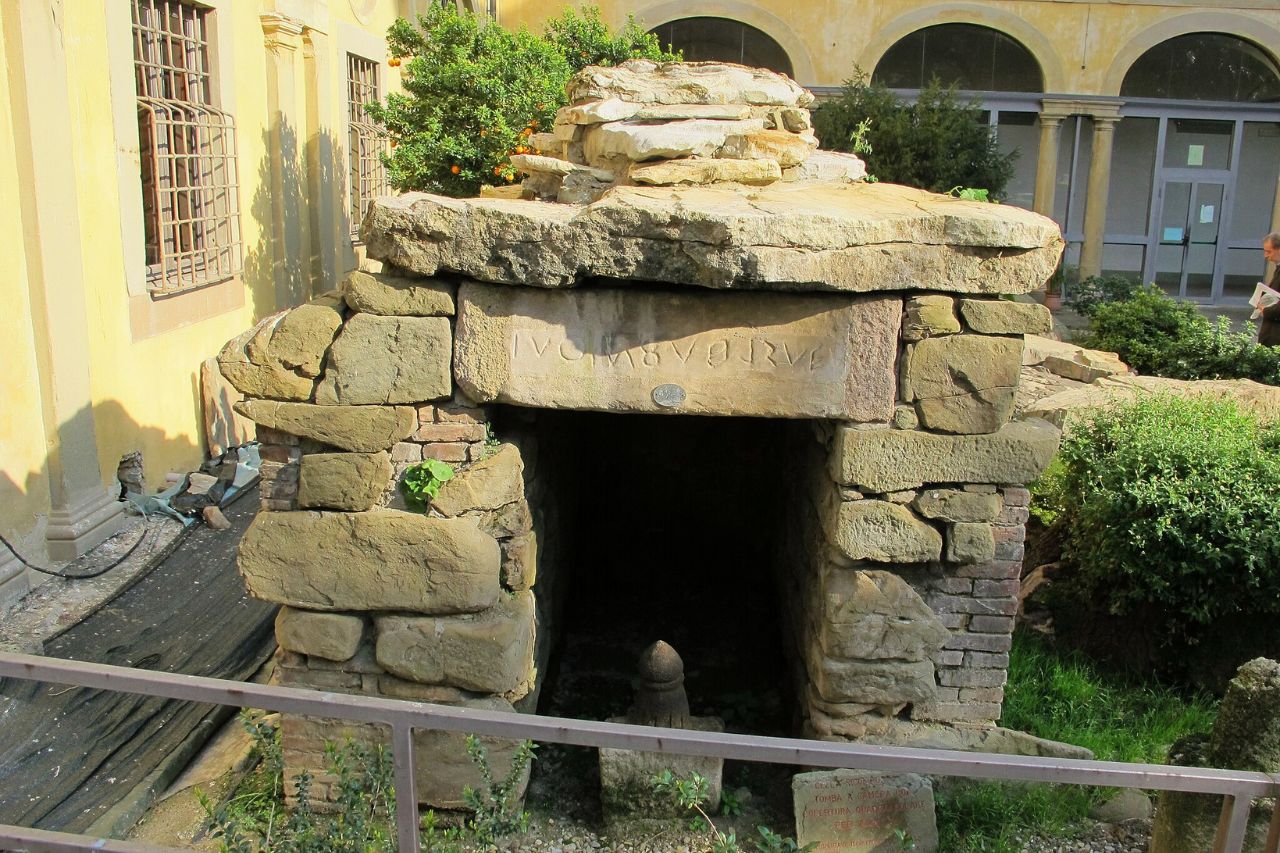
The area around Castiglione was settled by the Etruscans. The ancient city of Vetulonia, a few kilometers from Castiglione della Pescaia, was one of their most important towns due to mining opportunities in the Metalliferous Hills. In fact, the town controlled territory into the hills during its peak. Allusions to Vetulonia can be found in the text Dionysius of Halicarnassus from the first century BC, and in the poem of Silio Italico from the 1st century AD. However, due to the decline that started around the sixth century BC and continued under the Roman Empire, the location of Vetulonia was lost and left a mystery. The city was only identified at its current location in 1887.
In the old town, you can still view the sixth-century Etruscan walls. Outside, the ruins of a neighborhood known as Poggiarello Renzetti show the remains of houses, roads, sewers, and sidewalks. Further out on the outskirts of the town, you can find ruins of tombs.
Explore more: Etruscan Cities in Tuscany – Ancient Roads to Temples & Tombs
7. Punta Ala

Punta Ala is a small coastal town nearby, offering a beautiful sandy beach. A popular and luxury tourist spot, the town also hosts famed sailing regattas and boasts many elite homes and yachts. Providing strategic protection between territories in the 1500s, its location left it vulnerable to pirate attacks. This legacy left behind impressive fortress monuments: the Hidalgo Tower, built during the sixteenth century as a way to protect territory to the south, and Il Castello di Punta Ala (Punta Ala castle), built by the Medici in the sixteenth century for protection to the north.
Suggested Accomodations in Castiglione della Pescaia
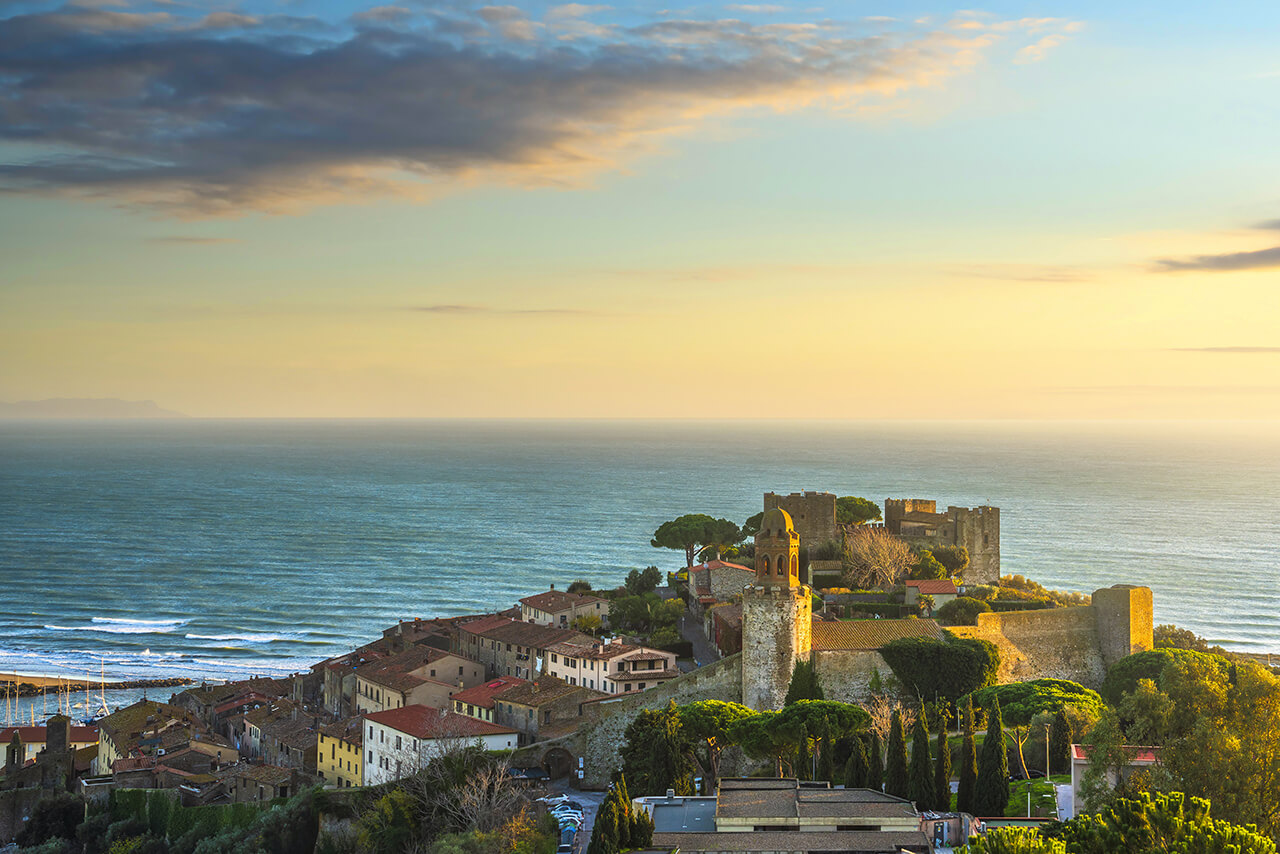
Apartment Leopardi
A centrally located apartment, in the main part of town and less than 1 kilometer from Levante Beach. Everything you need is within easy walking distance!
Little Villa with Private Beach at the Dunes
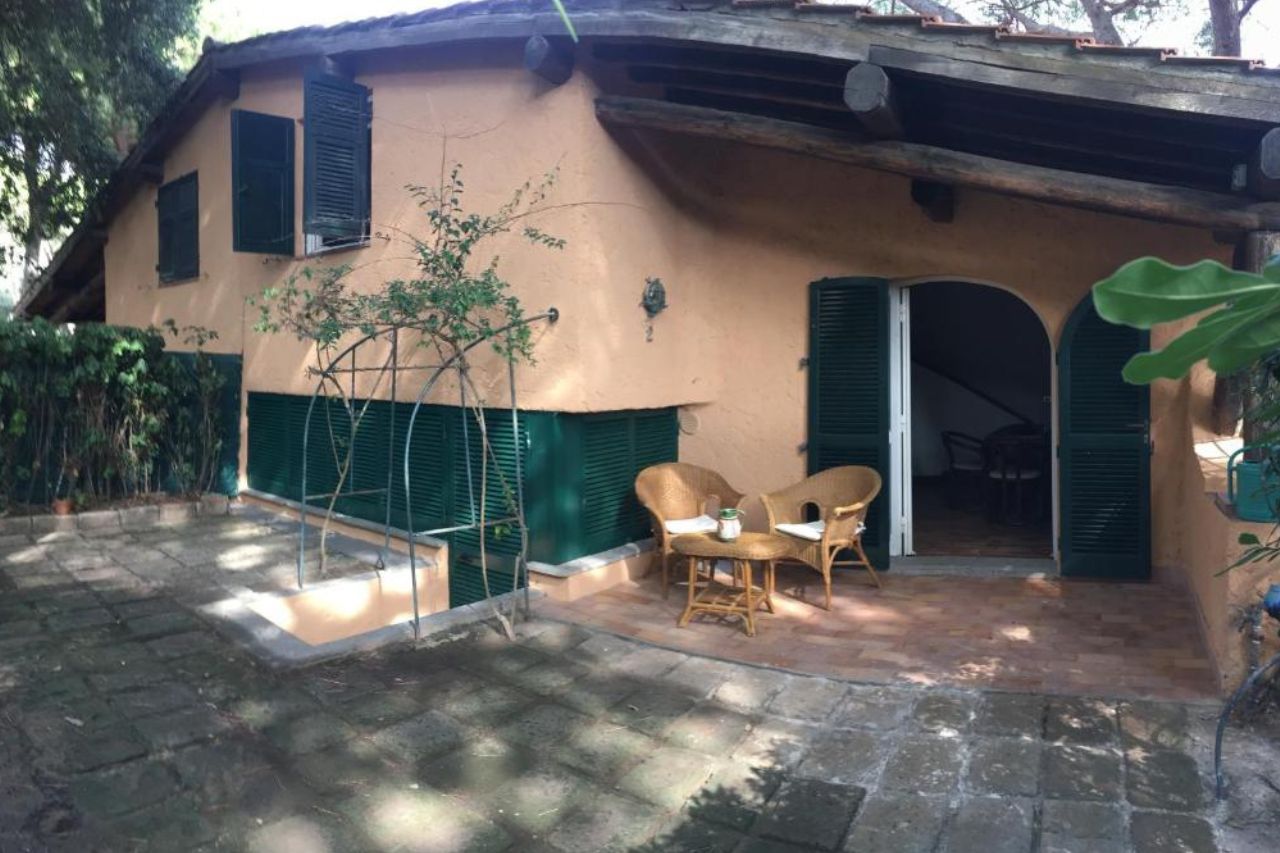
This beachfront villa offers easy access to the beaches, dunes, and seaside dining. It is surrounded by a garden with lots of greenery and pine trees that guarantee shade even in the hottest summers
Roma Hotel
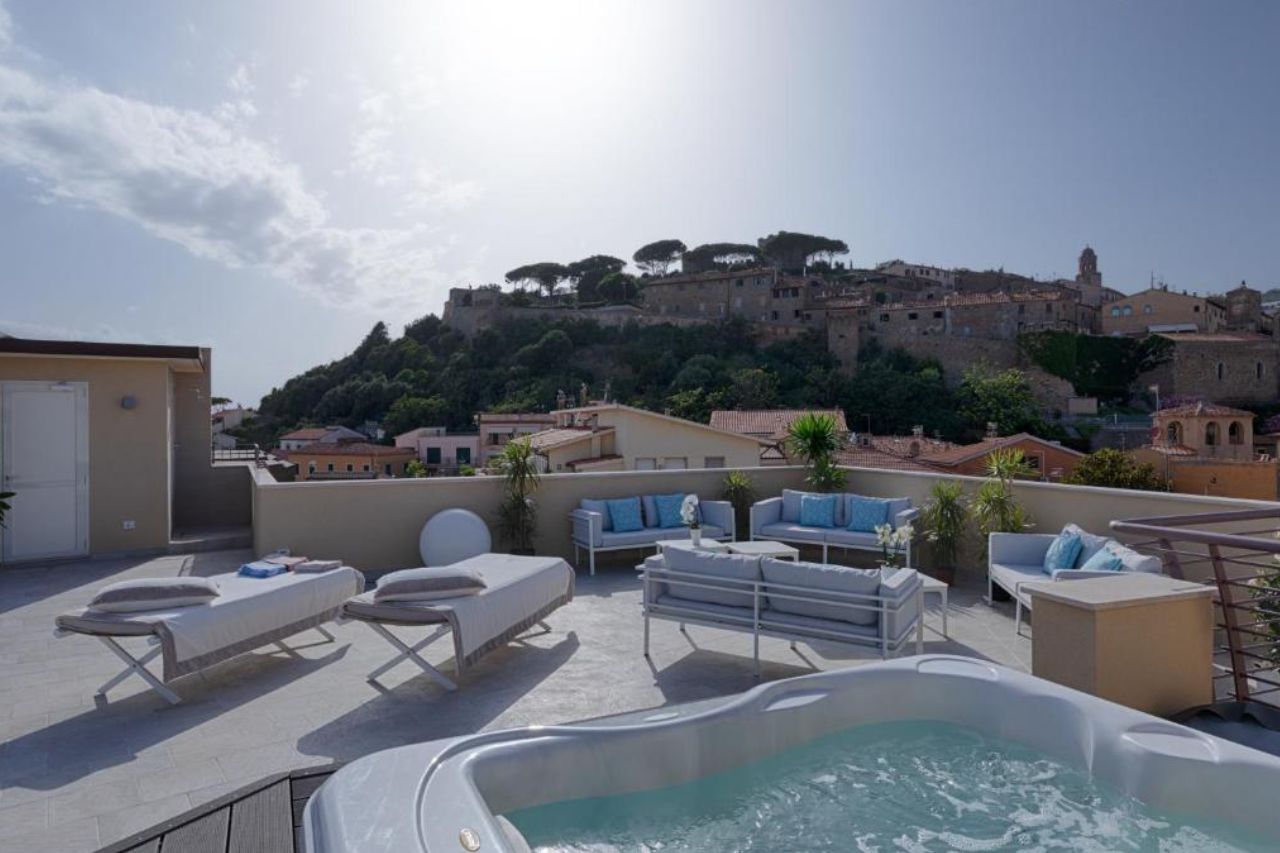
Right on the beach, the views from this hotel are unbeatable! With the sea and port in one direction and the town in the other, you’ll be right at home in the middle of the charms of Castiglione della Pescaia.
The Best Beaches in Castiglione della Pescaia
Castiglione della Pescaia is famed for its luxury seaside attractions. A few beaches to check out:
- West Beach (Spiaggia di Ponente) and East Beach (Spiaggia di Levante) are the main beaches of the town and are easily accessible by foot. They are separated by the town’s harbor and channel called Fiume Bruna.
- Past East Beach, you will find Marina di Grosseto, usually slightly less crowded, and Le Marze. Le Marze is a less crowded and windy beach. It offers dunes, watersports like windsurfing, and proximity to the pine forests. Here you can walk the coast from Castiglione della Pescaia to Marina di Grosseto. There are also nude beaches and a pet-friendly beach, Bau Beach.
- Spiaggia delle Rocchette is a sandy beach, but beneath the water you’ll find a rocky seabed that draws snorkelers and underwater adventurers (even in winter!). There is also a twelfth-century fort built by the Medici, Rocchette Fort.
Read more: Best Beaches in Tuscany – Discover The Beauty
What to See Around Castiglione della Pescaia

These nearby towns make great side trips!
- Massa Marittima (40 minutes by car) is an inland tourist resort town. Found at a slightly high altitude, the temperature is consistently a bit lower than on the coast, making it an ideal escape on a summer day. With both ancient and modern history connections, Massa Marittima offers castles, churches, and Archaeological sites to visit.
- Grosseto (25 minutes by car) is the head town of the province of Grosseto, where Castiglione della Pescaia is located. Uniquely, its historical center is completely intact – the entire wall is still in place. A visit is like traveling back in time!
- Monte Argentario (50-60 minutes by car) is a promontory – once an island – that reaches out from the coast into the Tyrrhenian Sea and offers an abundance of sailing, nature walks, and Spanish Fortress explorations. The summit of the promontory, Mount Argentario, houses a convent. The town of Orbetello connects the promontory to the mainland.
Frequently Asked Questions about Castiglione della Pescaia
Here are the most frequently asked questions from travelers who visit this beautiful location
Is Castiglione della Pescaia Worth Visiting?
Castiglione della Pescaia is worth a visit on any trip to the Tyrrhenian coast of Southern Tuscany! if you are looking for seaside luxury, nature reserves and water sports, ancient ruins, and medieval history.
What does Castiglione della Pescaia Mean?
Castiglione della Pescaia is named for its castle. It is built just over a fishing port, along the Tyrrhenian coast of southern Tuscany.
How is the Sea in Castiglione della Pescaia?
The sea in Castiglione della Pescaia is known for its crystal-clear waters and clean beaches. The Tyrrhenian Sea, along which Castiglione della Pescaia is situated, generally offers a pleasant and mild climate. The sea is suitable for swimming, water sports, and other recreational activities. The coastline is characterized by sandy beaches and picturesque coves.
Which Islands can you See from the Beach of Castiglione della Pescaia?
From the beach of Castiglione della Pescaia, you can see the islands of the Tuscan Archipelago, particularly the island of Elba. It is the third-largest island in Italy and is known for its natural beauty, historic sites, and charming villages. On clear days, the view of Elba and other nearby islands can add to the scenic beauty of the coastal landscape. Keep in mind that visibility may vary depending on weather conditions.


